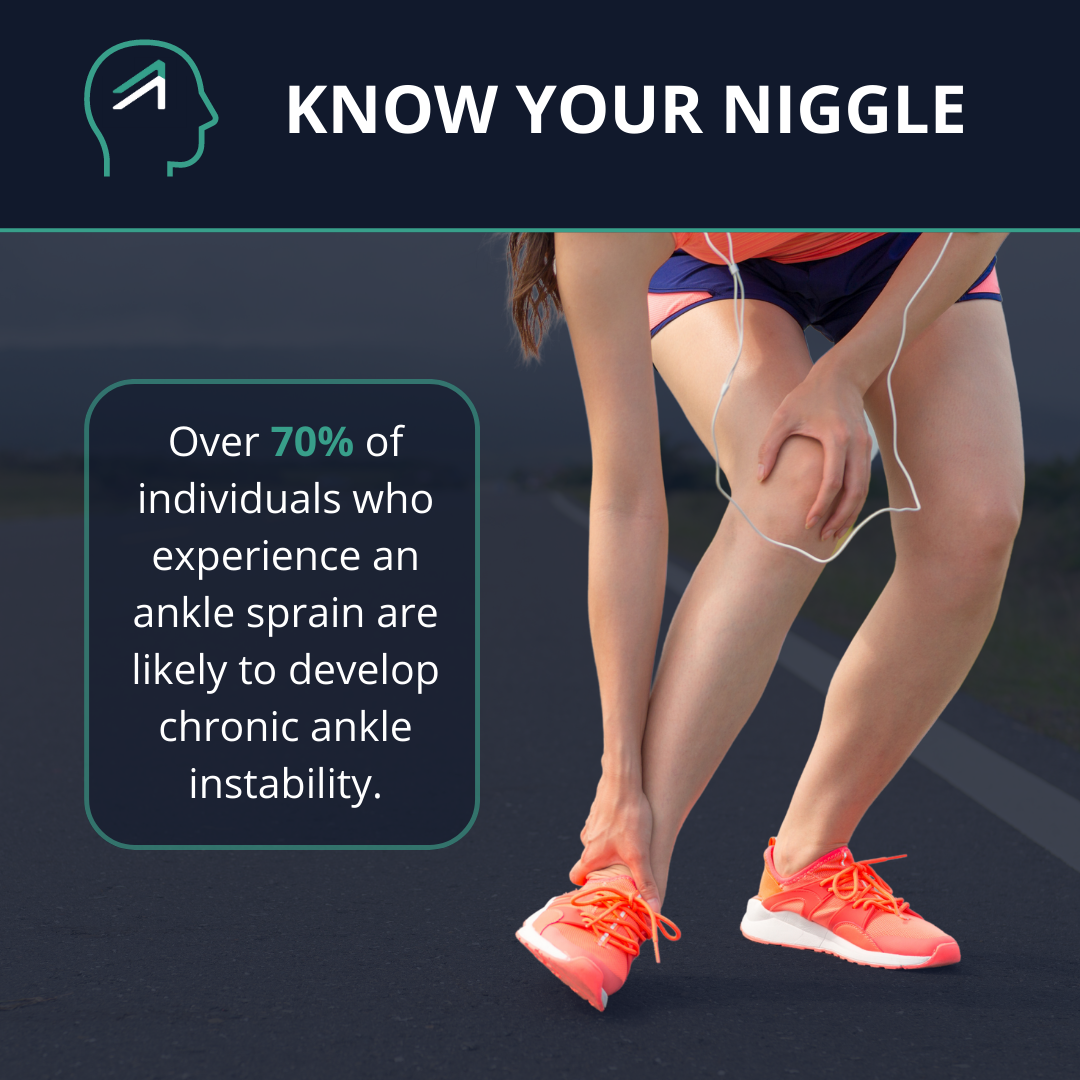Strong and Stable Ankles: Your Guide to Preventing and Healing Chronic Ankle Instability

Welcome to our ultimate guide on tackling chronic ankle instability (CAI) — a sneaky condition that can leave you dealing with recurring ankle sprains and that wobbly feeling. But fear not, because we've got your back! In this blog post, we'll walk you through everything you need to know about chronic ankle instability. Get ready to recognize the signs, understand why it happens, and discover awesome tips to prevent and overcome it. Let's jump right in!
What is Chronic Ankle Instability?
Chronic ankle instability (CAI) occurs when the ligaments on the top and outside of your foot and ankle become stretched or torn due to excessive force or sudden movements, resulting in recurring ankle sprains and a feeling of instability. Simply put, it's like having a loose joint that's prone to rolling or twisting. There are three common types of ankle sprains:
- Inversion Ankle Sprain: This is the most common form, where the foot rolls inward, stretching the ligaments on the outside of the ankle. It often leads to pain, tenderness, and swelling on the top and side of the foot and ankle. The more you sprain your ankle, the weaker the ligaments become, increasing the risk of chronic ankle instability.
- Eversion Ankle Sprain: This type occurs when the foot rolls outward, stressing the ligaments on the inside of the ankle. Although less common, it can still cause discomfort and instability.
- High Ankle Sprain: Also known as a syndesmotic sprain, this happens when the ligaments between the lower leg bones (tibia and fibula) are injured. High ankle sprains require more time to heal than other types and can lead to chronic ankle instability if not properly addressed.
Do I Have Chronic Ankle Instability?
If you've had previous ankle sprains, especially ones where your foot rolled inward, you may be at risk of chronic ankle instability. Look out for signs such as recurring pain, tenderness, swelling, and inflammation in the top and side of your foot and ankle. Activities like walking, running, and hopping may provoke pain, which may subside during the activity but flare up afterward. You may also feel sensitivity around the outer ankle when your foot is gently placed in an inverted position.
Risk Factors:
Several factors can increase your susceptibility to chronic ankle instability:
- Previous Ankle Sprains: If you've experienced one or more ankle sprains in the past, you're at a higher risk of developing chronic ankle instability. The ligaments supporting the ankle joint may become weakened or stretched, leading to ongoing instability.
- Gender: Females are more prone to developing chronic ankle instability than males. This could be due to differences in anatomical structures, hormones, and how muscles around the ankle work.
- Poor Rehabilitation: Inadequate or improper rehabilitation following an initial ankle sprain increases the likelihood of developing chronic instability. Failing to address muscle imbalances, restore joint proprioception (awareness of your body's position), and regain strength and stability can contribute to persistent symptoms.
- High-Risk Activities: Engaging in activities that involve frequent changes in direction, jumping, or uneven surfaces, such as basketball, soccer, or trail running, increases the risk of ankle sprains and subsequent chronic ankle instability.
- Anatomical Abnormalities: Certain anatomical factors, such as having high-arched or flat feet, can make you more susceptible to chronic ankle instability. These structural abnormalities affect the biomechanics of the foot and ankle, making them more prone to injury.
How to Avoid Chronic Ankle Instability:
Prevention is key in maintaining strong and stable ankles:
- Warm-up: Prioritize a thorough warm-up routine before physical activities to prepare your muscles and ligaments for movement.
- Strengthening Exercises: Incorporate exercises that target ankle stability and strength. Simple exercises like balancing on one foot, resistance training, and range-of-motion exercises can help improve stability and prevent sprains.
- Proper Footwear: Choose shoes that provide adequate ankle support, cushioning, and stability for the specific activities you're involved in. Don't be afraid to seek expert advice when selecting the right footwear.
- Technique and Form: Practice correct body mechanics and movement patterns to reduce the risk of ankle injuries. If you're unsure about your form, consider working with a knowledgeable coach or trainer.
How to Overcome Chronic Ankle Instability:
If you're already experiencing chronic ankle instability, don’t be disheartened, you can overcome it:
- Strengthening and Proprioceptive exercise: Consult a physical therapist or rely on Zlaants specialised ankle and foot exercises to improve strength, flexibility, balance, and proprioception of the ankle joint.
- Supportive devices: Wear an ankle brace or use taping techniques to provide external support and improve stability during physical activities, reducing the risk of recurrent ankle sprains.
- Footwear Modification: Choose appropriate footwear with good ankle support and stability can help prevent further ankle injuries. Consider orthotic inserts if necessary.
- Gradual Return to Activity: Follow a structured rehabilitation program that gradually reintroduces activities and sports to prevent re-injury. It's important to listen to your body and progress at a pace that allows for proper healing and strengthening.
Chronic Ankle Instability may feel like a setback, but it doesn't define your journey. By understanding the symptoms, risk factors, and preventative measures of CAI we can take charge of our ankle health and conquer CAI together. Embrace the opportunity to learn more about your body and it’s limits, give your ankle the time it needs and exercise patience. Remember, healing takes time, but with each step forward, you're building resilience and strength.
At Zlaant, we're here to support you every step of the way. Whether it's through our Zlaant App full of dynamic warm-up routines and specialized exercise circuits, or range of physical products, Zlaant has your back – so you can get back out there.
Note: This blog post is for informational purposes only and does not replace medical advice. If you're experiencing persistent or severe pain, consult with a qualified healthcare professional.
